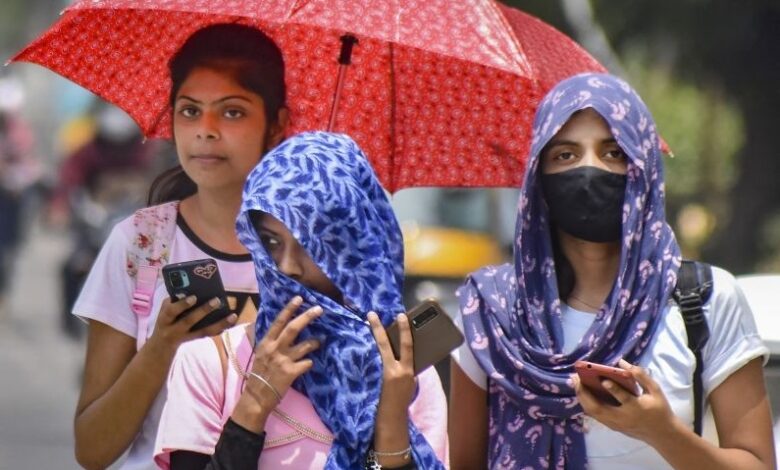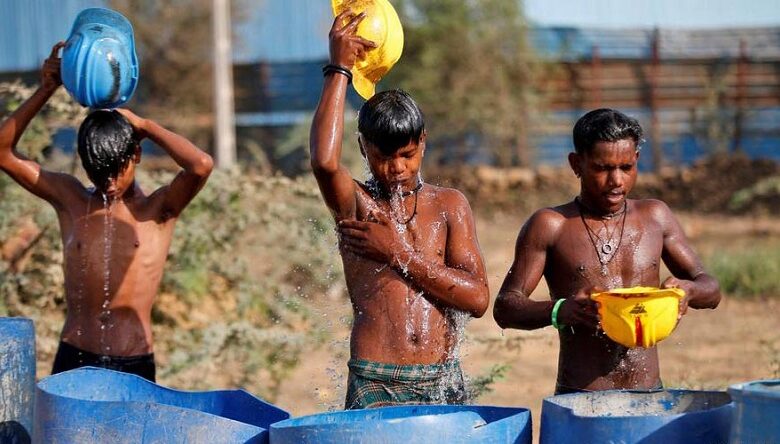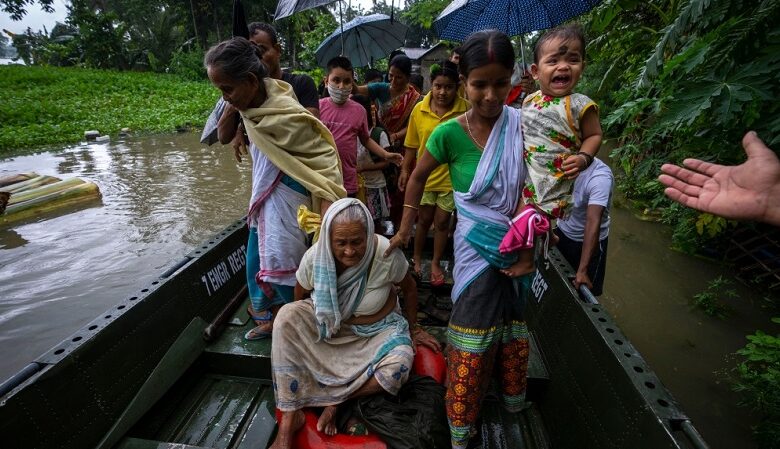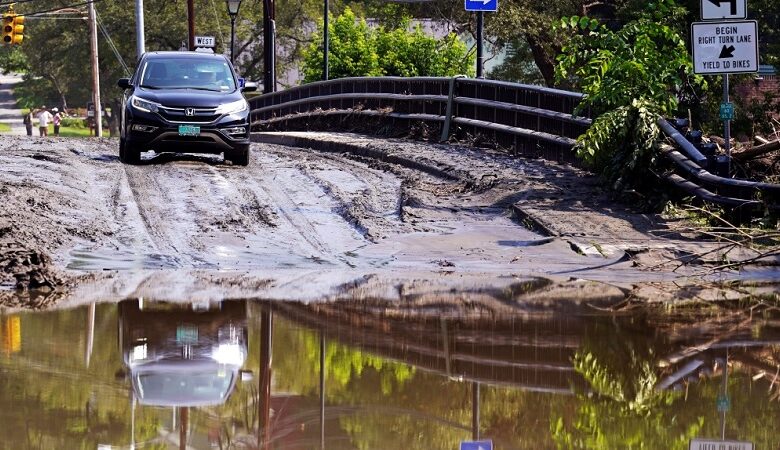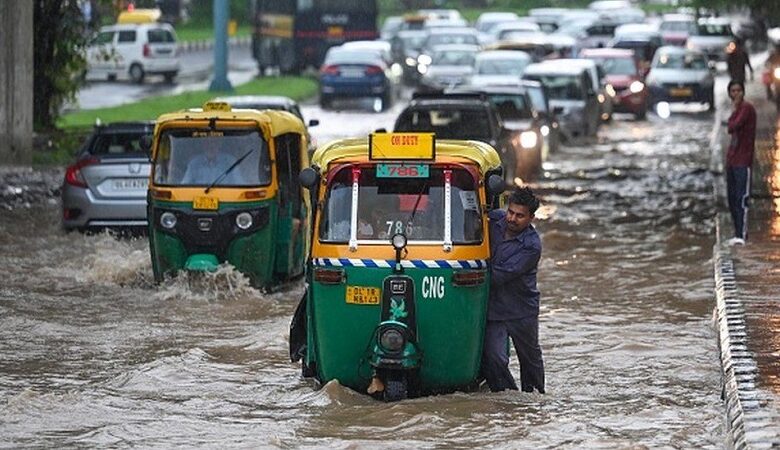RECORD-BREAKING HEATWAVE RAVAGES INDIA: FLASH FLOODS CLAIM LIVES
By Agnibeena Ghosh, 18 July 2023
In April 2023, an unprecedented heatwave engulfed several Asian nations, leaving a trail of scorching temperatures, health concerns, and power outages in its wake. India, Bangladesh, China, Thailand, and Vietnam were among the countries affected by this prolonged period of extreme heat, which shattered regional temperature records and claimed numerous lives due to heat stroke.
IMPACT ON INDIA
Being world’s most populous nation, India is expected to face significant challenges due to the climate crisis, as highlighted by the Intergovernmental Panel on Climate Change (IPCC). With a population of 1.4 billion people, the effects of climate change could have far-reaching consequences for the country.
India has already faced the brunt of the heatwave, with cities in the northern and eastern regions recording temperatures surpassing 44 °C (111 °F). Even the nation’s capital, New Delhi, experienced scorching temperatures of 40.4 °C (104.7 °F) on April 18. The alarming heatwave prompted health warnings and raised concerns about the well-being of the population.This article examines the implications of the heatwave, highlighting government advisories, mitigation efforts, and the human toll caused by heat-related illnesses.
Recognizing the severity of the situation, the Ministry of Labour issued an advisory to all states and regions, emphasizing the need to provide workers with adequate drinking water, emergency ice packs, and frequent breaks. In response to the extreme heat, Mamata Banerjee, the Chief Minister of West Bengal, took the precautionary measure of temporarily closing all schools in the state from April 17 to 22. Following suit, schools in Tripura and Odisha also suspended classes during the same period.
K. J. Ramesh, director general of meteorology at the Indian Meteorological Department, highlighted the importance of implementing mitigation efforts. He revealed how some states took action by closing schools early, operating government offices from 7 a.m. to 1 p.m., and advising individuals, especially youths and seniors, to stay indoors between 11 a.m. and 3 p.m. These measures aimed to protect people from the scorching heat during the peak hours of the day.
As the heatwave persisted as well as intensified into May, the Indian Meteorological Department issued a heatwave alert for seven southern and central states. Temperatures soared above 45 °C (113°F) in Uttar Pradesh, exacerbating the situation with frequent power outages lasting up to 12 hours. The blackouts prompted protests at power stations near Lucknow as people expressed their frustration and demanded swift solutions. The adverse effects of the heatwave even extended to wildlife, as three cheetah cubs sadly lost their lives in Kuno National Park. One surviving cub required critical care at a specialized facility. These cheetah cubs were particularly significant as they were the first to be born in India in over seven decades. Their deaths were believed to be a result of the extreme heat, as zoologists believe the heatwave considerably weakened their growing bodies.
HUMAN TOLL AND HEALTH IMPLICATIONS
Tragically, the intense heat claimed lives and led to a surge in illnesses caused due to extreme heat. As of June 19, Uttar Pradesh reported 119 heat-related deaths, while Bihar documented 47 fatalities. Additionally, around 400 people were hospitalized in Uttar Pradesh during the same time period, further underscoring the impact of the heatwave on public health.The scorching temperatures, combined with prolonged exposure, caused severe health issues, including heatstroke and dehydration.
The impact of such extreme weather events is particularly harsh on India’s impoverished communities, who are among the most vulnerable. Urban slums, where approximately 35% of the population resides (roughly 472 million people), face significant risks during floods, as highlighted by the World Bank.
The Indian government, along with local authorities and medical teams, mobilized efforts to address the rising heat-related casualties. Emergency response measures were implemented to ensure affected individuals received timely medical attention and relief. Local hospitals and healthcare facilities remained on high alert, providing necessary treatment and support to those affected by heat-related illnesses.
RECENT IMPLICATIONS
In recent times, India has experienced scorching heat waves in the northern and eastern regions, followed by devastating flooding in states like Himachal Pradesh. Heavy rains have caused severe damage, forcing thousands of people to flee their homes as villages transformed into waterlogged areas and roads turned into rivers.
The annual monsoon season, which lasts from June to September, brings about severe flooding and landslides in India. Among the worst affected states is Assam, with a population exceeding 31 million. More than 495,000 people across 22 districts have been affected by floodwaters, with approximately 14,000 individuals seeking refuge in relief camps. Tragically, at least 10 deaths have been reported since the onset of the rains, according to disaster management officials and state authorities.
Red alerts, indicating the highest level of threat, have been issued for various northern states, including Himachal Pradesh, Uttarakhand, Punjab, and Haryana. Additionally, landslide warnings have been issued for Uttarakhand and Himachal Pradesh.
IMPACT ON THE CAPITAL
The heavy rainfall has also led to the closure of schools in several areas, including Uttar Pradesh and the capital city of New Delhi.On July 13, a significant number of individuals were evacuated from their residences in Delhi as a precautionary measure due to the risk of widespread flooding caused by continuous heavy rainfall in northern India.
The water levels of the Yamuna River, a tributary of the Ganges that flows through the Indian capital, had exceeded the designated danger mark by approximately three meters (equivalent to around 10 feet) on Thursday, as reported by the Central Water Commission. In response to this situation, Arvind Kejriwal, the chief minister of the capital region, made the decision to close schools and repurpose them as relief camps to aid those affected by the potential flooding.
Among those directly impacted were numerous migrant workers who resided near the river banks. With their makeshift homes submerged in water, many of them sought refuge on the adjacent roads, converting them into temporary shelters. Meanwhile, others were compelled to evacuate in an attempt to find higher ground and ensure their safety.
It is evident that the effects of climate change are already manifesting in India, with heat waves and floods wreaking havoc across the country. The government’s response, including advisories, mitigation efforts, and school closures, demonstrates the seriousness of the situation.Urgent action is needed to address climate change and its consequences, including improved disaster management strategies, resilient infrastructure, and efforts to mitigate greenhouse gas emissions. Only through comprehensive and collective measures can our nation safeguard its population and build a more sustainable and resilient future for its citizens.



